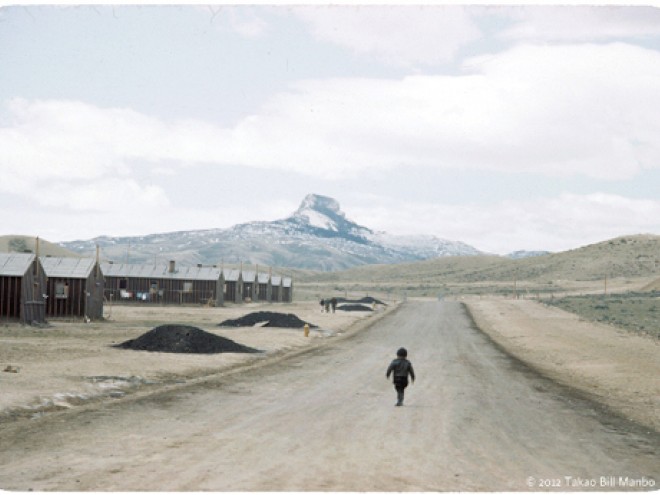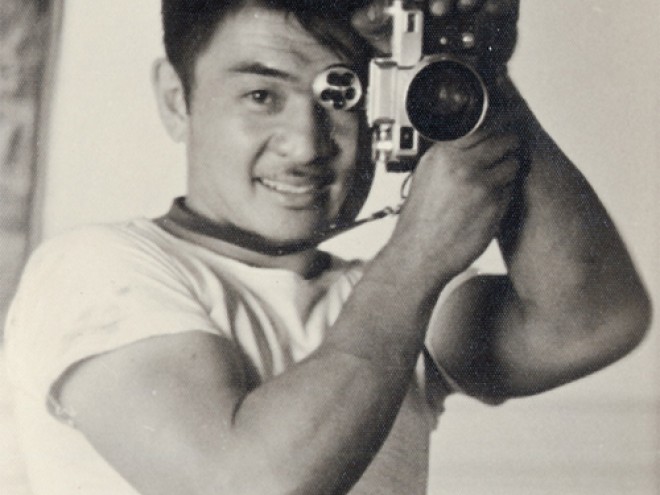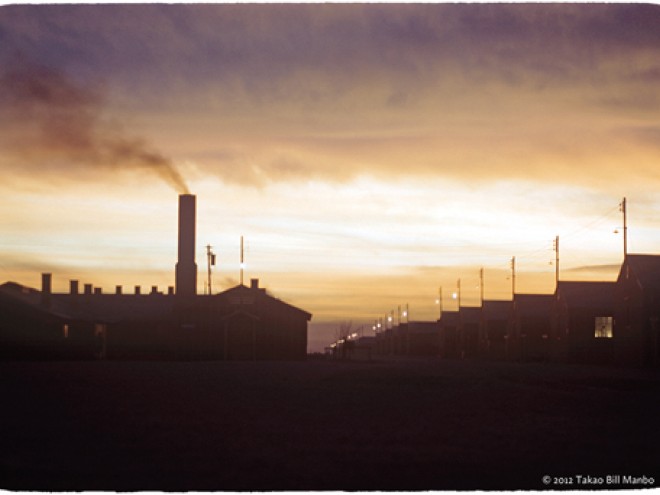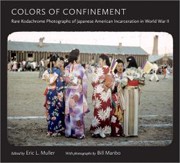In my blog posts this week I havewritten about the Kodachrome slides that Bill Manbo took while imprisoned withhis family at the Heart Mountain Relocation Center in 1943 and 1944. Today I return to the question with which I began: was Heart Mountain an American“concentration camp?”
Controversy over the useof the term “concentration camp” erupted in the late 1990s when an exhibition about the camps forJapanese Americans was slated to open at the Ellis Island Immigration Museum inNew York. The exhibition, created by theJapanese American National Museum in Los Angeles, was entitled “America’sConcentration Camps: Remembering the Japanese-American Experience.” Some American Jewish groups, most prominentlythe American Jewish Committee, objected to the title. They argued that using the term “concentrationcamp” to describe places like Heart Mountain diminished the suffering of those(mostly Jews) who lived and died in the Nazi camps in Europe. Eventually a compromise was negotiated: the exhibition would retain its title butfeature an explanatory panel disclaiming any attempt to compare the American campsto those in Europe.
This did not end the matter. Over the following years, activists in theJapanese American community and some scholars continued to encourage all whospeak and write about the imprisonment of Japanese American to use the term“concentration camp.” Their positioncontinued to attract support until finally the national Japanese AmericanCitizens League adopted a resolution endorsing it as a preferred term.
I won’t use the term in myown writing and speaking about the American camps, except in situations where Ihave (and wish to spend) lots of time explaining exactly why I’m using it.
The best argument for theterm is that it’s historically authentic. Lots of people called the camps for Japanese Americans “concentrationcamps” at the time. Take a quick look atthese little clips from stories in the Washington Post and the Los AngelesTimes from 1942:
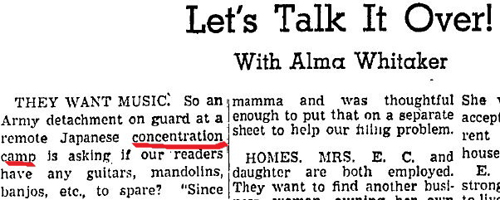
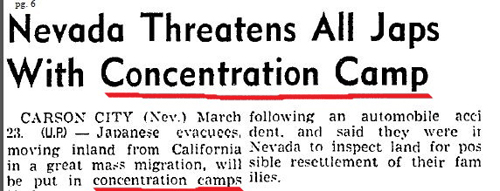
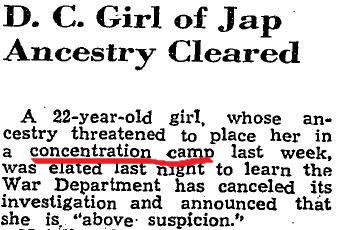
Another argument for theterm – one that I’ve never found terribly persuasive – is the dictionary. Advocates for the term maintain that thedictionary definition of “concentration camp” unambiguously fits places likeHeart Mountain. I suppose it depends alittle on your choice in dictionary. According to Webster’s Third New International Dictionary, Unabridged(1993), a “concentration camp” is “a camp where persons (as prisoners of war,political prisoners, refugees, or foreign nationals) are detained or confinedand sometimes subjected to physical and mental abuse and indignity.” That’s certainly in the ballpark, but what ifyou prefer to look at the Oxford Dictionary of English (3d ed. 2010)? There you find the following definition:
“a place in which largenumbers of people, especially political prisoners or members of persecutedminorities, are deliberately imprisoned in a relatively small area withinadequate facilities, sometimes to provide forced labour or to await massexecution. The term is most stronglyassociated with the several hundred camps established by the Nazis in Germanyand occupied Europe 1933 – 45, among the most infamous being Dachau, Belsen, andAuschwitz.”
The second sentence ofthis definition captures why a dictionary can’t solve our problem: however accurate the first sentence is indescribing the American camps, the second sentence rings true aboutconventional usage. You say “concentrationcamp” to most people and what they hear is “Auschwitz.”
I believe that many of theadvocates for the term “concentration camp” understand this connotation – and thatit’s this very link that makes the term attractive. Rightly trying to correct the misperceptionthat the American camps were justified and life in them pleasant, they want a word that willjolt people. I once attended a talk wherea leading Japanese American advocate for the term “concentration camp”urged the audience to adopt the term because it would “get people in the gut.” Exactly. But the major reason why the term “gets people in the gut” is Auschwitz.
One other common argument infavor of the term “concentration camp” maintains that the error is in using that term not for Heart Mountain but for Auschwitz. The German camps, this argument goes, werein actuality “death camps,” not concentration camps. (Koji Steven makes this argument here,for example.)
In the name of trying tocorrect historical error, this position makes big errors of its own. The Germans devised and ran many differentkinds of imprisonment camps in Europe for Jews and others. I mentioned four camps in my first post back on Monday: Westerbork, Flossenbürg,Buchenwald, and Sobibor. Each of these differedfrom the others. Very few people died atWesterbork, and killing was not its specific purpose. More and more died at each of the otherlisted camps in order, and virtually every person taken to Sobiborperished. But from this list, onlySobibor was a “death camp” – a camp built for the purpose of killing people. To insist that Heart Mountain was a “concentrationcamp” while the German camps were “death camps” is to collapse all of the horrificcomplexity of German wartime incarceration into a simple and mistaken idea. It misses the point that Buchenwald, which mygrandfather survived, was importantly different from Sobibor, which his brotherdid not.
Lastly, and most importantly: all four of the German camps I listed (andall of the others I didn’t) were points on an importantly different spectrumfrom the American camps run by the War Relocation Authority. The German facilities – regardless of whetherthey functioned chiefly as transit camps or forced labor camps or death camps –were in service of a system of (at very best) disregard for the simple humanityand survival of those who passed through them that never entered the American experience.
Eric L. Muller is Dan K. Moore Distinguished Professor in Jurisprudence and Ethics at the University of North Carolina School of Law and director of the University of North Carolina at Chapel Hill’s Center for Faculty Excellence. His newest book, Colors of Confinement: Rare Kodachrome Photographs of Japanese American Incarceration in World War II, is now available.
